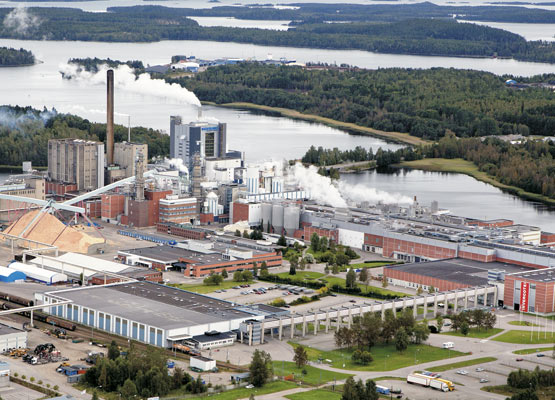Virgin fibre a necessity in chocolate packaging
/INS. “When we choose the paperboard for chocolate packaging, the decisive factor is taste and odour neutrality. Of course the paperboard must be suitable for the construction we have chosen but if we do not minimise the risk of the chocolate acquiring an off-taste from the packaging material then the rest does not matter.”
Tom Du Caju and his colleagues at Du Caju Printing & Packaging in Belgium are describing their experiences in food packaging. Du Caju is located in Erpe-Mere, just west of Brussels. With almost 50 employees and annual net sales of EUR 10 million, the company regards itself as a medium-sized Belgian converter. Of the packaging Du Caju produces, 85 per cent is food related and 11 per cent is chocolate packaging.
“In addition, just over ten per cent of what we do is packaging with direct contact between the food and the packaging material,” says key account manager Koen Penne. “We are choosing our food contact materials such as paperboard very carefully to avoid taint, odour and migration problems.”
Du Caju has been working with the world’s largest chocolate producer Barry Callebaut, for more than 25 years. The converter is regularly asked to create sophisticated promotional packaging for Callebaut as a sales tool and brand enhancer. The latest creation, The Origin Box, has an outer box made of a brown-coloured speciality paper from James Cropper, Colorscope Bitter Chocolate 350 g/m2. Inside the box are samples of chocolate from many countries. Each sample is packed in a wedge-shaped box made of Incada Silk 300 g/m2 from Iggesund Paperboard. The box also features a wheel giving information about the different types of chocolate. The wheel is printed on Invercote Creato 400 g/m2, also from Iggesund Paperboard, and is covered with the same material as the outer box.
The brown material has a very matt appearance and a very natural look. The brown colour and the uncoated sides give a very good indication of the look of chocolate.The Origin Box was a finalist in the ECMA/Pro Carton European packaging award competition in 2014.
“We have learned from experience that only virgin fibre is good enough for this type of packaging,” comments Erwin Heeren, an experienced purchaser at Du Caju. “In choosing materials we also get support from our customer, Barry Callebaut, who tests all packaging materials for up to sixty days in its own sensory laboratory.”
As a purchaser he must also keep up to date with both the environmental debate and the discussion about how mineral oils in recycled-fibre-based materials can contaminate packaged foods.
“We are following the mineral oil debate with great interest, as are our most knowledgeable customers,” Erwin Heeren says. “However, we are not seeing any increased demand for traceability certificates for paperboard materials – neither FSC nor PEFC. That demand is constant at between three and five per cent of our total volume.”
Caption 1: Erwin Heeren, Tom Du Caju and Koen Penne of Du Caju Printing & Packaging proudly display The Origin Box.© Iggesund
Caption 2: The Origin Box is made of three kinds of paper material, of which two, Invercote and Incada, are made by Iggesund Paperboard.© Iggesund
Iggesund
Iggesund Paperboard is part of the Swedish forest industry group Holmen, one of the world’s 100 most sustainable companies listed on the United Nations Global Compact Index. Iggesund’s turnover is just over €500 million and its flagship product Invercote is sold in more than 100 countries. The company has two brand families, Invercote and Incada, both positioned at the high end of their respective segments. Since 2010 Iggesund has invested more than €380 million to increase its energy efficiency and reduce the fossil emissions from its production. © Iggesund
Iggesund and the Holmen Group report all their fossil carbon emissions to the Carbon Disclosure Project. The environmental data form an integral part of an annual report that complies with the Global Reporting Initiative’s highest level of sustainability reporting. Iggesund was founded as an iron mill in 1685, but has been making paperboard for more than 50 years. The two mills, in northern Sweden and northern England employ 1500 people.
Further information:
Staffan Sjöberg
Public Relations Manager
staffan.sjoberg@iggesund.com
Iggesund Paperboard
SE-825 80 Sweden
Tel: +4665028256
Mobile: +46703064800
www.iggesund.com












Let us know if you are going to use this press release. Thank you!